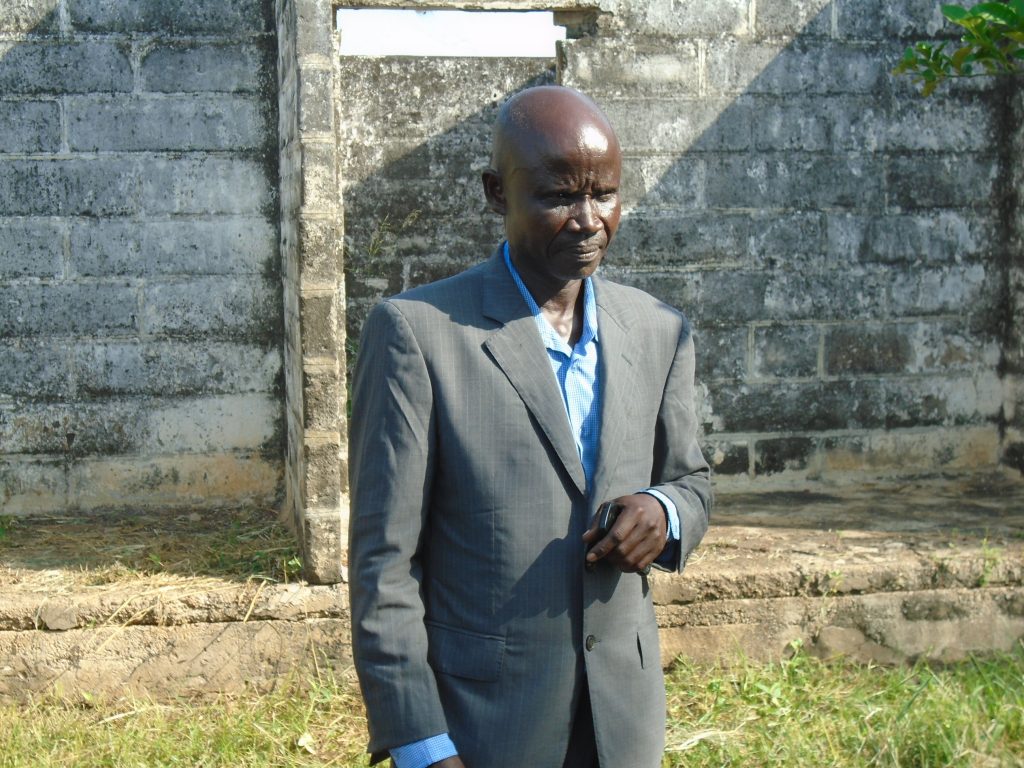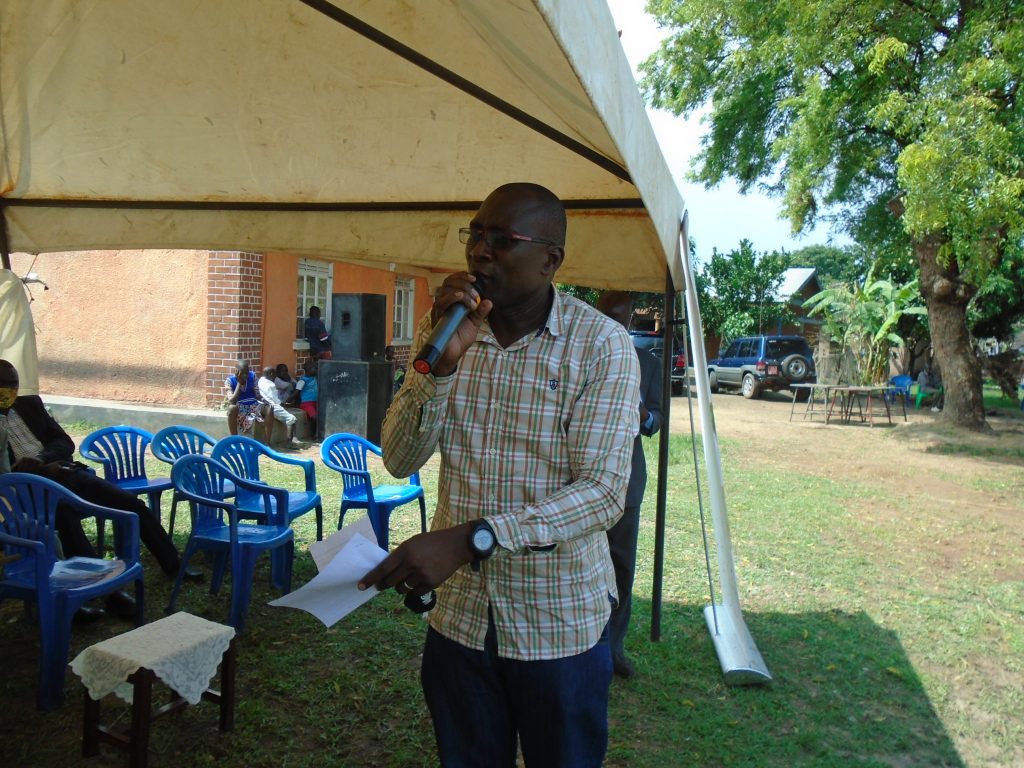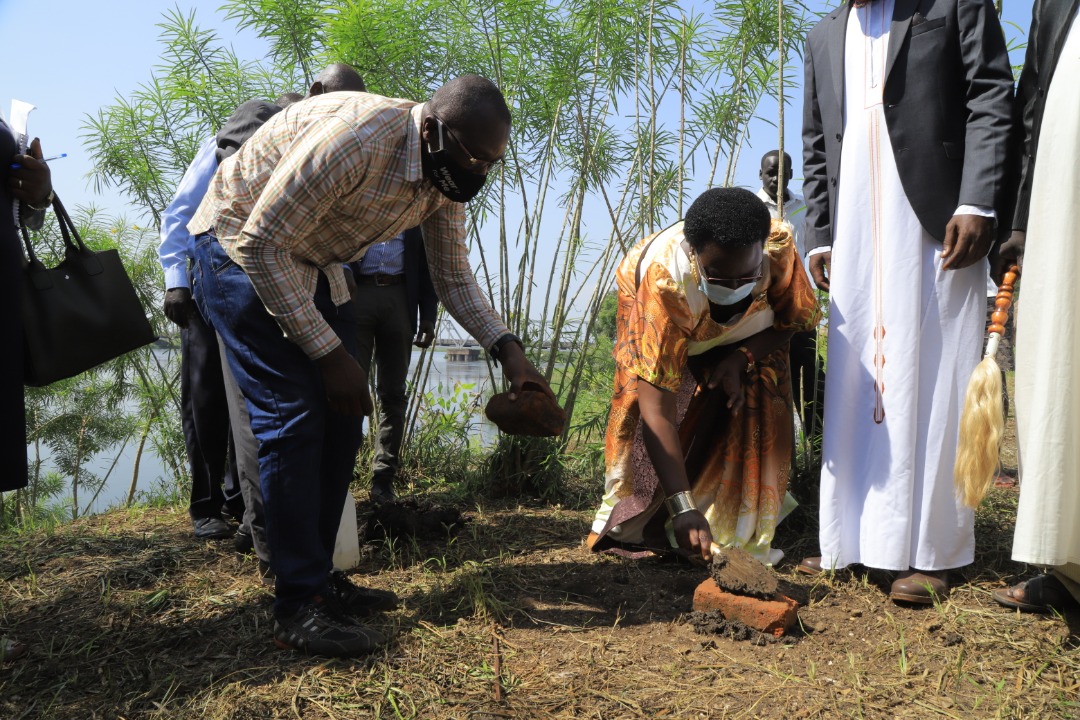Hon Grace Kwiocwiny lays the foundation stone for the Construction of the perimeter wall to protect and preserve Wang lei cultural site
By our reporter
25th.11.2020
For over 573 years the historical site where the Nyipir and Labongo separated was being lost in the waters due to climate change
It is believed that in 1427AD, two brothers, Gipir and Labong had a bitter split after failing to contain continuous disagreements in their family.
In the famous ‘bead and spear’ folklore taught in the Ugandan primary school curriculum, one brother is forced to kill his own child who had swallowed the bead, a condition put on him in revenge after he had forced his brother to search for his spear after an elephant disappeared with it in the forest.
It’s said that one brother crossed the Nile River and his descendants are the current Acholi while the remaining sibling would produce the Alur tribe.
Despite such a rich historical importance that could potentially attract huge revenues in tourism, the Wang-lei site along Albert Nile in the current Pakwach district has largely been undeveloped.
However, strong cultural attachments and beliefs still exist to date under the stewardship of the chiefs of Puvungu who believe the site brings in protection and immense blessing from the spirits of Labongo and Giipir.
The site is inaccessible without the consent of its high priest, 78-year old Walter Jalobo Omoto who is said to have inherited the guardianship of the site from his late father after being chosen by the spirits of the gods.
Upon visit by an outsider Mr Jalobo is expected to perform rituals by offering a black sheep and a white hen that he says mysteriously thereafter disappear in the river to seek the consent of the spirits.
He says without those rituals, big black snakes suddenly appear and chase the intruders and if they insist, they either run mad or become naked and also disappear forever in the Nile.
“With the rituals, it’s not a guarantee that the spirits will grant permission for the accessibility of the site, when they deny, you don’t force their wills”, he says.
He says the best time to carry the ritual is early morning when the spirits are still active. But as a condition, he’s not expected to talk to anyone or look back until he reaches home after performing the rituals.
Jalobo as an obligation is expected to visit the site every morning and communicate to the gods and inform him of any impending calamities that would have befallen the Luo tribes.
After years of doom, plans are finally underway to restore the site and document its importance in the history of the Luo tribes.
The Cross cultural foundation of Uganda, a nongovernmental organization that promotes the recognition of culture as vital for human development has taken over the protection of wang-lei.
Under the plans, a perimeter walls, a monument of Gipiir and Labongo casting the axe in the river, and an information board are to be constructed.
Ms Barbra Babweteera, the organization’s deputy executive director says the project is expected to in excess of sh80 million with commissioning set for February 2021.
“We expect the generations to be telling the story of their heritage, we are compiling books of significance to the Luo and we hope to build the capacity of the locals to be professional guides and to translate in simple ways about this site whenever tourists visit the site”, Babweteera says.
After laying the foundation stone to the site on Saturday 21st November, Ms Grace Freedom Kwiyocwiny, the state minister for Northern Uganda pledged government commitment in developing historical sites in the region in order to enhance revenue and promote cultural identity.
“I will report to the cabinet about this great initiative by the cross cultural foundation, as gov’t, we shall make sure that marketing of the sites is emphasized both on the internet and also documentation of other forgotten sites” she said.
Kwiocwiny rallied the Luo to embrace the site as their cardinal identity but stop fighting each other on petty issues.
Mr John Okumu Jolly, an elder currently spearheading the documentation of the site says the history of the splitting point is a great identity to the Luo tribes.

The site is also important mark and symbol of identity of the Alur and entire Luo people accordingly
Rwoth Peter Oala Oyiko, the chairperson Kerkwaro of Acholi says it’s against the strong identity background that every 18th February, the clan leaders both from Acholi and Alur perform rituals in unity.
“The site is a strong bond in splashing the spirit of unity from the humble background of our ancestors, we hardly disagree to the extent of killing one another on tribal basis”, he claims.
Mr Vincent Ocaya Orach, the Prime Minister Ker Alur kingdom says the site unites the Alur people while the high priest Jalobo calls the site a point of reconciliation and denunciation of hostility by arms among the Luo speakers.

The redevelopment of the site is already faced with some internal bickering among the Alur kingdom and Puvungu chiefdom that wants independence over the management of the site.
Rwoth Odong Madir, the cultural chief of Puvungu has also raised concerns over the terms of revenue sharing once the site begins generating money through tourism.
Part of the land has reportedly been taken by Uganda railway cooperation with fears that it may likely affect the scope of expansion in the future.
There is a recent spate of hostility among the Jonam and Acholi people over the Palango border in Nwoya district which the Jonam claim is their ancestral land.
However, the clan leaders and chiefs from the Luo tribes want to foster a new wave of unity through the strong linkage of the cultural sites that identifies them as the descendants of Labongo and Gipiir.
Jonam County in Pakwach district alone is said to be host to over thirty historical sites that need proper documentation and development.
